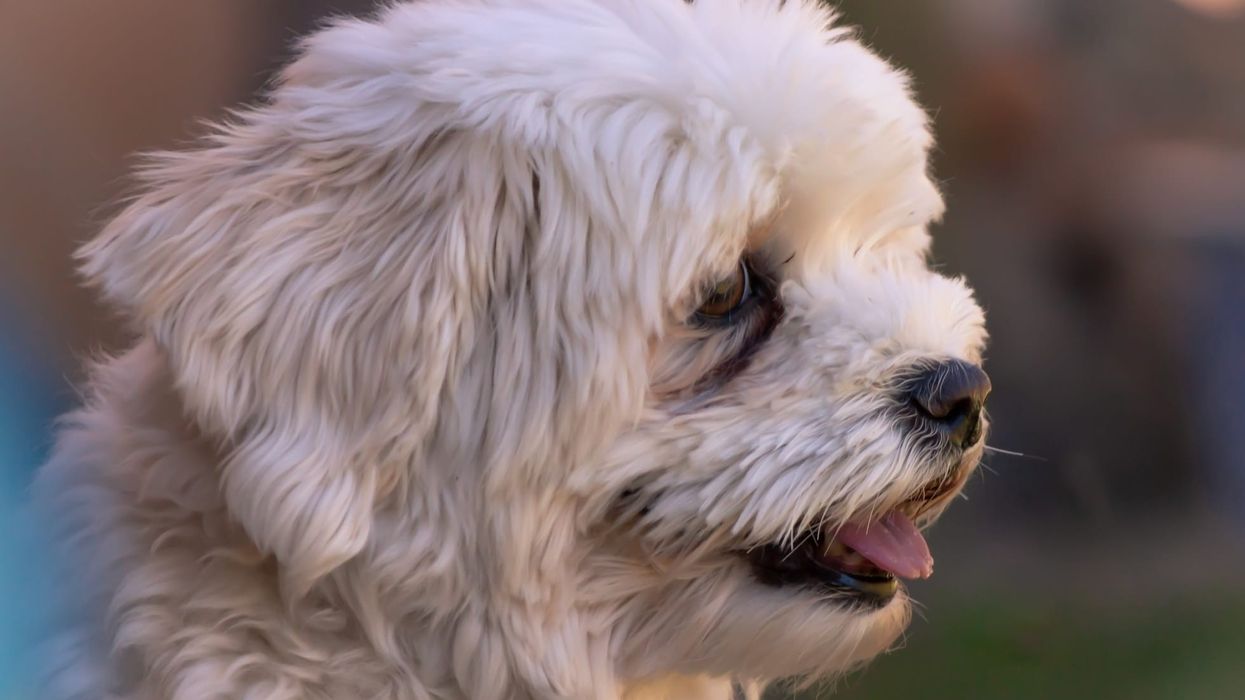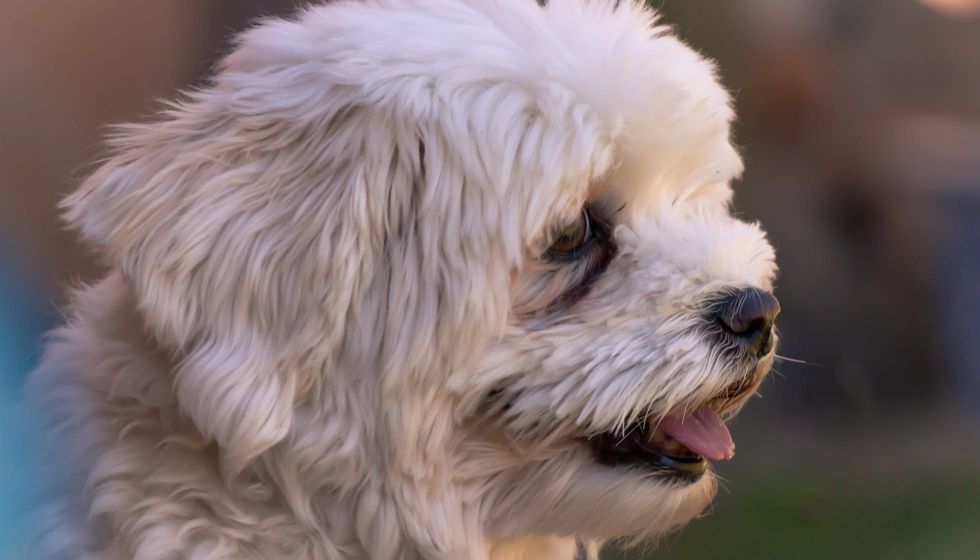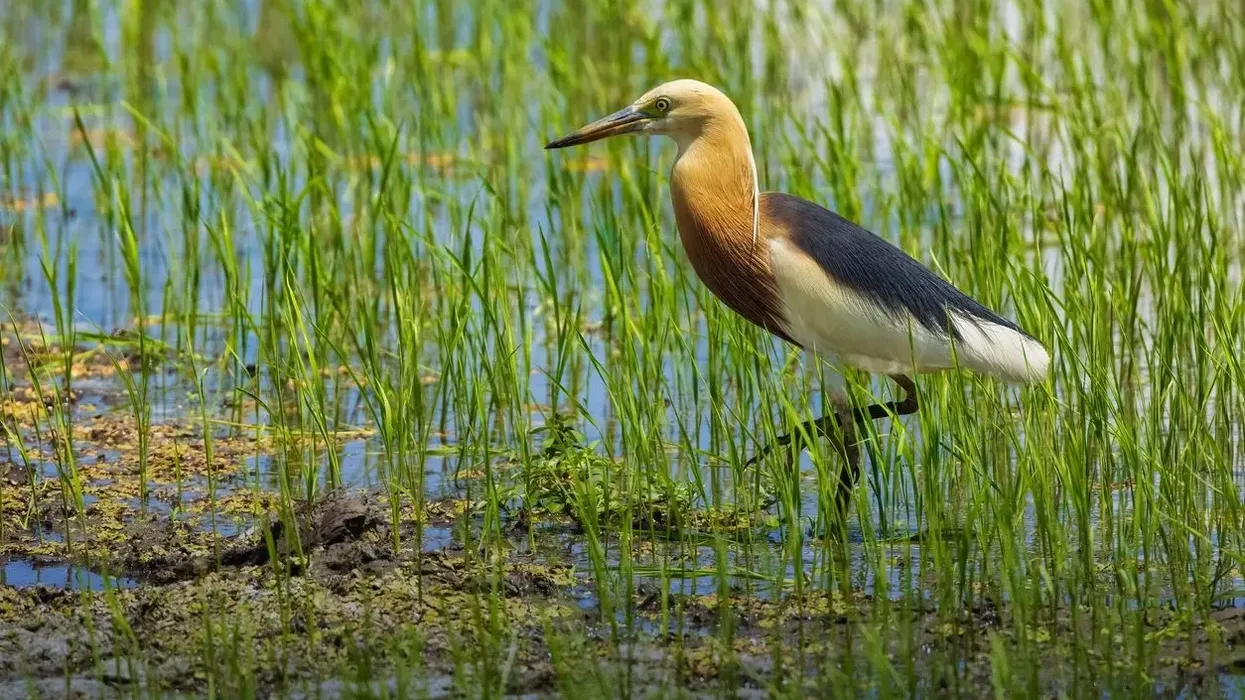The Havanese dog breed belongs to the bichon family of dogs, otherwise known as toy dogs, lap dogs, or companion dogs. Also known as the Havana Silk Dog, this beautiful dog breed is named so because of their Havanese coat.
They are small and compact in size and structure are not typically kennel dogs because they prefer being with their owners. They are extremely attached to their human owners and are content when they are content.
It was recognized as the 142nd breed by the American Kennel club in the year 1996. They are known to be exceedingly friendly, loyal, mild-tempered, and lovable dogs.
These small dogs carry their tail over their back and have ears that are dropped and folded. Their furry and silky coat is abounding and what is most attractive about them which also comes in several beautiful colors.
When it comes to the Havanese temperament, they are usually very spirited and jovial in personality, and like most dogs, they have a curious disposition and aren't very yappy unless they are left untrained.
They make amazing family dogs who love affection and warmth, especially cuddles. They are quite notable for the spring in their gait, which is a characteristic feature, unlike other dog breeds.
They make the ideal family pet, amazing companion dogs, and are perfectly safe as well as fun for kids as well.
These little dogs barely have any serious health risks, and can very effectively adapt to most environments. However, the Havanese breed is extremely social and requires adequate grooming, and is less likely to survive if left alone for long periods in a day.
If you liked our article, you can check out other similar and very engaging articles like pocket pitbull facts and chow chow facts.
Havanese Interesting Facts
What type of animal is a Havanese?
The Havanese is a breed of dog that is a bichon type of dog, which typically means, toy dog or a play dog. They are the direct descendants of the extinct Cuban dog breed Blanquito de la Habana or 'little white dog of Havana'.
The Havanese breed was probably achieved due to the cross-breeding of the Balanquito along with other bichon types or even poodles.
What class of animal does a Havanese belong to?
The Havanese dog breed belongs to the class of Mammalia, which gives birth to an average number of one to nine puppies in a litter.
How many Havanese are there in the world?
There is no estimated number of Havanese dogs in the world, however, they are prolific in number since they are the most popular dog in Cuba and the United States.
Where does a Havanese live?
Havanese dogs are bred solely for the purpose of providing companionship to humans. Hence they mostly occupy households. They are not good kennel dogs since they need constant attention and care and cannot be let alone for long periods of time.
What is a Havanese's habitat?
These small dogs make the ideal house dog. The Havanese need to be constantly tended to and cannot live alone. Hence, they mostly occupy the homes of their owners where they can stay close to them.
Who do Havanese live with?
The Havanese mainly live with their human owners as they do not do well alone. This little dog breed is highly sociable, playful, and love to be in constant companionship with their humans.
How long does a Havanese live?
Like most other breeds of dogs, the Havanese breed can survive for an approximate life span of 14 to 16 years if taken proper care of and also because they have a bare minimum of health problems.
How do they reproduce?
The Havanese dog breed falls under the class of Mammalia and therefore breeds as all other dogs do. These dogs usually give birth to a litter of one to even nine puppies in a go.
What is their conservation status?
Since these small dogs are famous amongst pet owners because of their beautiful long coat of fur that does not shed much and also because of the ease of trainability and massive friendliness. They are amongst the popular toy group of dog breeds.
The Havanese dogs are particularly bred only to be bought as family dogs or toy dogs. Hence they fall under the category of Least Concern.
Havanese Fun facts
What do Havanese look like?

Pet pups and dogs from the Havanese group of dog breeds are exceptionally adorable and small, with a distinguished and durable outer coat that comes in many remarkable colors like Brindle, black and tan, particolored, sable, tri-color, Irish pied, black and white, and with a tail that is carried upwards and droopy ears.
How cute are they?
Havanese dogs are exceptionally cute with their tiny body and mild-tempered, sociable, and genial personalities. They are known for their overt friendliness and playfulness especially when they are brought as a puppy.
If groomed properly and easily trained they have great potential to be good-natured play dogs who are great with kids and adults alike. No owner of this dog will ever be able to resist their sweet nature, silky and furry coat, and almond-shaped brown eyes.
How do they communicate?
Havanese dogs have a distinctive bark which is their only mode of communication like every other dog. As a puppy, a Havanese can be easily trained to be good-natured and will not normally bark at strangers.
How big is a Havanese?
Havanese dogs usually grow up to a height of nine in (23 cm) and hence are quite small and compact. Their cute height makes them the ideal size to be play dogs.
How fast can a Havanese run?
Unlike most dogs that can run over 15 – 20 miles per hour, Havanese dogs, although quite jovial and playful, have lesser lung power. Although taking these small dogs for a walk is good for their exercise needs, you can hardly go for a run with them as a pet.
How much does a Havanese weigh?
An average Havanese dog usually weighs 7 lb – 14 lb (3 kg – 6 kg).
What are their male and female names of the species?
The Havanese dog breed does not have any other special distinguishing name to differentiate between the males and the females. Like most breeds of dogs, the Havanese males are called dogs, and females are called bitches.
What would you call a baby Havanese?
Like all other dogs, a Havanese baby is called a puppy or a Havanese puppy.
What do they eat?
Since a Havanese puppy or dog is usually adopted or bought to serve as a lapdog or pet, they are unable to fend for themselves in a household and have to rely completely on their owner for food and nourishment.
Hence, giving the best quality of dry dog food, chicken or beef stew and even human food products like white rice, fish or dairy products can be fed to them.
Are they slobbery?
Unlike quite a few dog breeds, Havanese dogs are not slobbery at all. They barely drool. However, there can be certain health conditions or certain factors like the dog's age, excessive exercise, and activites that may cause them to be slobbery.
Would they make good pets?
A Havanese is said to have a mild temperament, can effectively learn through training, are great for playing with children, have a bubbly personality makes this breed an ideal pet. On a more positive note, this intelligent breed loves activity and exercise, interacts with people, is exceptionally affectionate, easy to train dogs.
These characteristics are the ideal characteristics that make them the most affectionate and ideal pets.
They are also very energetic, active, and intelligent as well and hence anyone can train them effectively. When it comes to the dog's agility, they are quite nimble on their feet, when they are young in age, but cannot go running for long periods of time.
They get less agile with age.
Their wavy coats are also durable and not prone to shedding much, but require brushing. Hence, yes, they would make exceptionally ideal pets and active companions for both adults and children alike.
Did you know...
According to history, the Havanese dog is the only national dog of Cuba.
They are the direct descendants of the presently extinct dog breed called Blanquito de la Habana which roughly translates to 'little white dog of Havana' which is known to have further descended from another Bichon breed of dog named Tenerife.
The Havanese breed has been in the United States since 1959 during the Cuban revolution when there were only 11 dogs left to keep the breed from going extinct.
Now, since it is such a famous breed, it has not only been deemed as the national dog of Cuba but is also a pet that is in great demand.
Characteristics And Health Issues
The Havanese dogs are not known to suffer any particular health fatalities.
However, when it comes to their wavy coat of fur, they need to be constantly groomed to avoid matting and shedding and also a little bit of brushing every day. It is also imperative to keep their diet and nutrition as healthy as possible sticking strictly to dog food and certain human food products.
Since they are highly active and sociable play dogs, this lively breed cannot survive being left on its own for a long stretch of time as they live to be with their owners only.
Getting Your Own Havanese
It has been established that the Havanese dog breed makes great pets. If you want to get your own Havanese dog, make sure you get them from a reliable breeder or adopt them from a good animal shelter.
The average price of a Havanese usually ranges from a basic rate of $2,500 to a whopping amount of $9,000 if the breed is of show quality.
Here at Kidadl, we have carefully created lots of interesting family-friendly animal facts for everyone to discover! Learn more about some other mammals including pitbull chihuahua mix, or Cheagle facts.
You can even occupy yourself at home by drawing one on our Havanese dog coloring pages.









